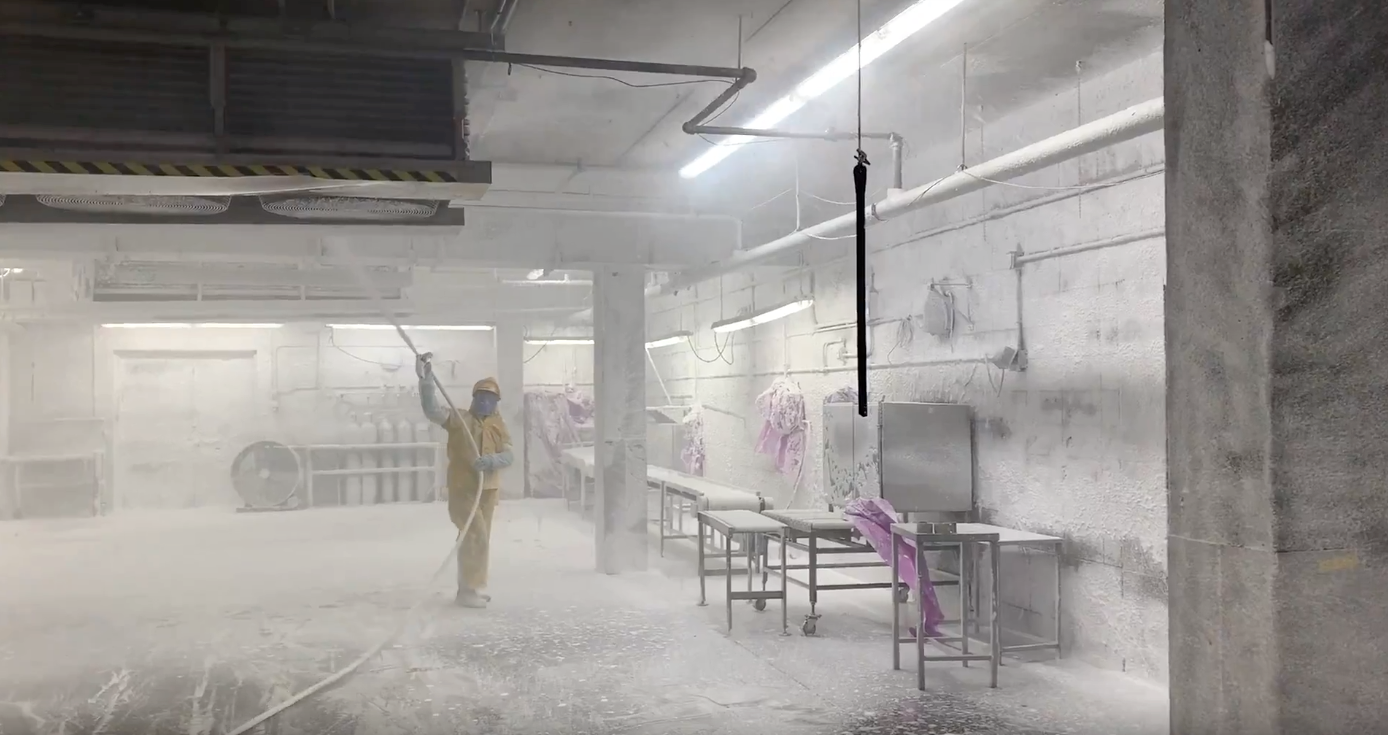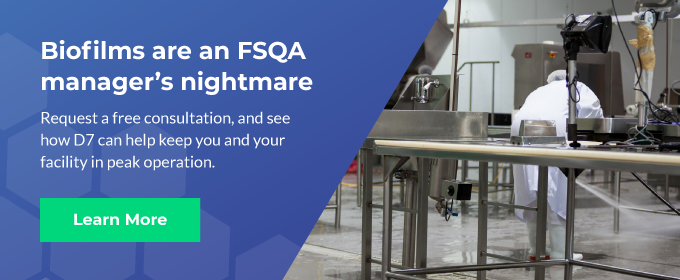
FSQA managers in the food processing industry typically have at least two sanitizers in rotation because it is one of the best practices for the prevention of bacterial resistance, and required by the FDA and USDA. The types of cleaning products and sanitizers used in a facility will depend on the specific food processing environment, the equipment being used, and a number of other factors.
However, although using multiple chemicals is a common approach, it does have drawbacks. Each chemical has specifications for how it is stored, the concentration to which it must be diluted, and the preferred method for application. FSQA managers and their teams should have written protocols for when each chemical should be applied and clear instructions for use. It’s also a common practice for sanitation teams to keep a log of what chemicals were applied and at what concentrations in order to keep track of the rotation.
Cleaning Chemicals for Food Industry Applications
Although a range of chemicals are effective against the most common foodborne pathogens, there are a few that are most frequently used.
Hypochlorites
Chlorine combined with an inorganic compound, such as calcium or sodium, produces hypochlorites. Household bleach is a good example of a cleaning chemical that uses hypochlorites to disinfect surfaces and other materials.
In a food processing environment, the efficacy of hypochlorites depends on a number of factors. Surfaces must be sufficiently clean before hypochlorites are applied for sanitation, or they become less effective. Additionally, the pH of the solution, its concentration, the temperature of the facility, and the contact time must all be in certain ranges. For example, when concentration levels are too high or if the hypochlorite solution is left on surfaces for too long, it could be corrosive to equipment.
Quaternary Ammonium Compounds
Quaternary ammonium compounds, commonly known as quats, are complex chemicals composed of nitrogen bound to multiple alkyl chains. In contrast to other disinfectants, quats can be applied over a relatively large temperature range. Unlike hypochlorites, which require a clean surface, quats are effective on surfaces that have light soil.
The pH and hardness of the water used to make quat solutions can impact their efficacy, so it’s important for sanitation teams to ensure that they are properly diluted. Quats can also leave a residual antimicrobial film, which may be advantageous in some food processing applications, but could also be detrimental in facilities that rely on active cultures. When rotating quats with other chemicals, thorough rinsing is required because they are not compatible with chlorine compounds and some detergents.
Peroxyacetic Acid (PAA)
Peroxyacetic acid works by disrupting the chemical bonds within the cell membranes of bacteria and other microorganisms. Often combined with hydrogen peroxide, PAA works well in cold conditions, making it ideal for refrigeration units in food processing environments. PAA is also effective for biofilm removal, which is a common challenge in food processing plants. Compared to hypochlorites, PAA is more effective, less corrosive, and more environmentally friendly because it breaks down into acetic acid, oxygen, and water.
The D7 Difference
Rather than relying on a single approach, D7 uses multiple mechanisms to destroy bacteria. By incorporating hydrogen peroxide, peroxyacetic acid, percarbonates, quaternary amines, and detergents, D7 is able to safely and effectively disinfect surfaces in food processing environments. The product is also safe to use, easy to apply, and non-corrosive on equipment surfaces.
Many FSQA managers also appreciate D7’s ability to remove biofilms without mechanical action. Just apply the foam to the affected surfaces, leave it there for the recommended contact time, and use a potable water rinse to remove it. As a complete disinfecting solution, D7 can be used on its own or integrated into a rotating sanitation schedule.
How to Use D7 in Your Facility
Deciding which cleaning chemicals for food industry applications are right for your facility is a challenge that every FSQA manager faces. Decon7 is here to help you determine the best way to incorporate D7 into your sanitation protocols. This might include replacing one of the sanitizers you currently have in rotation with D7, but using it in the same capacity. Because it can be applied as a spray, mop, soak, fog, or foam, you can integrate it into your existing sanitizing routine with minimal disruption.
Whether you’re addressing an outbreak or improving your processes, incorporating D7 into your daily sanitation protocols will help you keep bacteria at bay. To learn more, request a consultation today.


